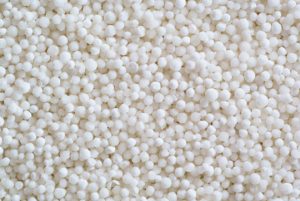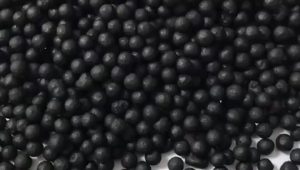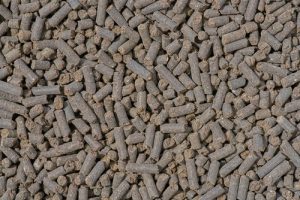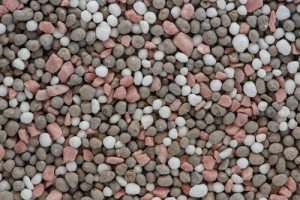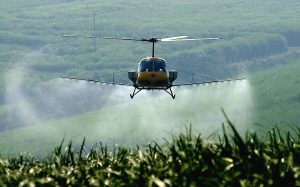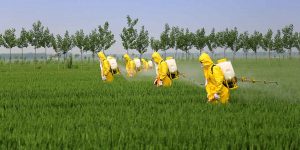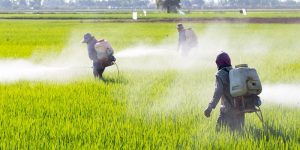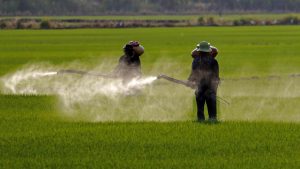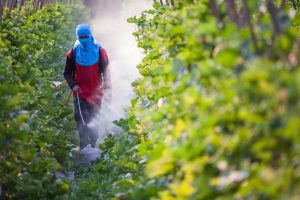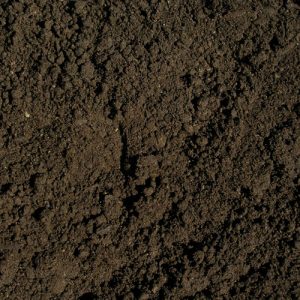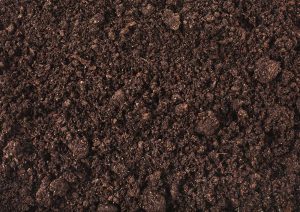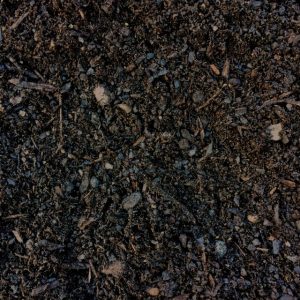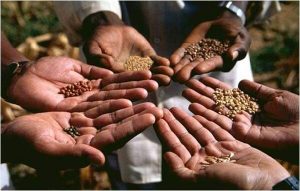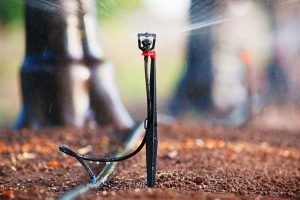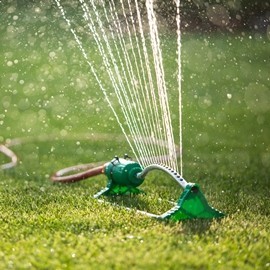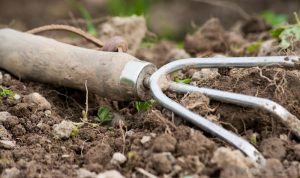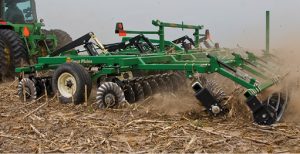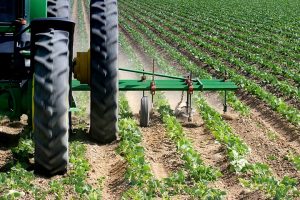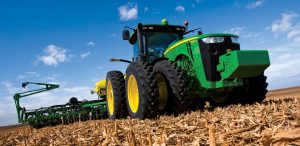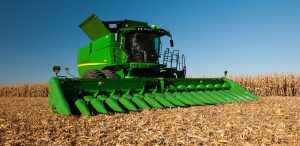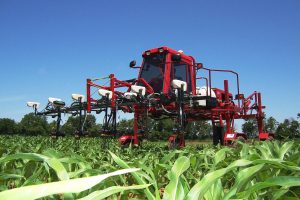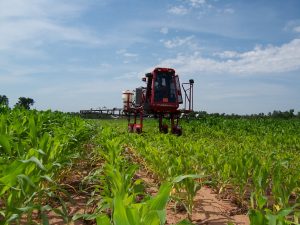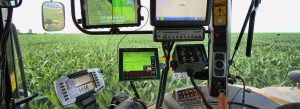
OUR CATEGORIES OF PRODUCTS

RAW MATERIALS
A RAW MATERIAL, also known as a feedstock, unprocessed material, or primary commodity, is a basic material that is used to produce goods, finished products, energy, or intermediate materials that are feedstock for future finished products. As feedstock, the term connotes these materials are bottleneck assets and are required to produce other products. The term raw material denotes materials in unprocessed or minimally processed states.
FERTILIZERS
A FERTILIZER or fertiliser is any material of natural or synthetic origin (other than liming materials that is applied to soil or to plant tissues to supply one or more plant nutrients essential to the growth of plants. Many sources of fertilizer exist, both natural and industrially produced.
PESTICIDES
PESTICIDES are substances (in general a chemical or biological agents) that are meant to control pests. The term pesticide includes all of the following: herbicide, insecticides, nematicide, molluscicide, piscicide, avicide, rodenticide, bactericide, insect repellent, animal repellent, antimicrobial, and fungicide. The most common of these are herbicides which account for approximately 80% of all pesticide use. Most pesticides are intended to serve as plant protection products (also known as crop protection products), which in general, protect plants from weeds, fungi, or insects.
HERVICIDES
HERVICIDES, also commonly known as weedkillers, are substances used to control unwanted plants. Selective herbicides control specific weed species, while leaving the desired crop relatively unharmed, while non-selective herbicides (sometimes called total weedkillers in commercial products) can be used to clear waste ground, industrial and construction sites, railways and railway embankments as they kill all plant material with which they come into contact. Apart from selective/non-selective, other important distinctions include persistence (also known as residual action: how long the product stays in place and remains active), means of uptake (whether it is absorbed by above-ground foliage only, through the roots, or by other means), and mechanism of action (how it works).
MODERN HERVICIDES are often synthetic mimics of natural plant hormones which interfere with growth of the target plants. The term organic herbicide has come to mean herbicides intended for organic farming. Some plants also produce their own natural herbicides, such action of natural herbicides, and other related chemical interactions, is called allelopathy. Due to hervicide resistance (a major concern in agriculture) a number of products combine herbicides with different means of action. Integrated pest management may use herbicides alongside other pest control methods.
INSECTICIDES
INSECTICIDES are substances used to kill insects. They include ovicides and larvicides used against insect eggs and larvae, respectively. Insecticides are used in agriculture, medicine, industry and by consumers. Insecticides are claimed to be a major factor behind the increase in the 20th-century’s agricultural productivity.
INSECTICIDES can be classified into two major groups: systemic insecticides, which have residual or long term activity; and contact insecticides, which have no residual activity.
INSECTICIDES may be repellent or non-repellent. Social insects such as ants cannot detect non-repellents and readily crawl through them. As they return to the nest they take insecticide with them and transfer it to their nestmates. Over time, this eliminates all of the ants including the queen. This is slower than some other methods, but usually completely eradicates the ant colony.
INSECTICIDES are distinct from non-insecticidal repellents, which repel but do not kill.
FUNGICIDES
FUNGICIDES are biocidal chemical compounds or biological organisms used to kill parasitic fungi or their spores. A fungistatic inhibits their growth. Fungi can cause serious damage in agriculture, resulting in critical losses of yield, quality, and profit. Fungicides are used both in agriculture and to fight fungal infections in animals. Chemicals used to control oomycetes, which are not fungi, are also referred to as fungicides, as oomycetes use the same mechanisms as fungi to infect plants.
FUNGICIDES can either be contact, translaminar or systemic. Contact fungicides are not taken up into the plant tissue and protect only the plant where the spray is deposited. Translaminar fungicides redistribute the fungicide from the upper, sprayed leaf surface to the lower, unsprayed surface. Systemic fungicides are taken up and redistributed through the xylem vessels. Few fungicides move to all parts of a plant. Some are locally systemic, and some move upwardly.
Most fungicides that can be bought retail are sold in a liquid form. A very common active ingredient is sulfur, present at 0.08% in weaker concentrates, and as high as 0.5% for more potent fungicides. Fungicides in powdered form are usually around 90% sulfur and are very toxic. Other active ingredients in fungicides include neem oil, rosemary oil, jojoba oil, the bacterium Bacilus subtilis, and the beneficial fungus Ulocladium oudemansii.
SOILS
SOIL is a mixture of organic matter, minerals, gases, liquids, and organisms that together support life. Earth’s body of soil, has four important functions:
- as a medium for plant growth
- as a means of water storage, supply and purification
- as a modifier of Earth’s atmosphere
- as a habitat for organisms
All of these functions, in their turn, modify the soil and its properties.
Soil is a product of several factors: the influence of climate, relief (elevation, orientation, and slope of terrain), organisms, and the soil’s parent materials (original minerals) interacting over time. It continually undergoes development by way of numerous physical, chemical and biological processes, which include weathering with associated erosion. Given its complexity and strong internal connectedness, soil ecologist regard soil as an ecosystem.
Most soils have a dry bulk density (density of soil taking into account voids when dry) between 1.1 and 1.6 g/cm3, while the soil particle density is much higher, in the range of 2.6 to 2.7 g/cm3.
SEEDS
A SEED is an embryonic plant enclosed in a protective outer covering. The formation of the seed is part of the process of reproduction in seed plants, the spermatophytes, including the gymnosperm and angiosperm plants.
SEEDS are the product of the ripened ovule, after fertilization by pollen and some growth within the mother plant. The embryo is developed from the zygote and the seed coat from the integuments of the ovule.
SEEDS have been an important development in the reproduction and success of gymnosperm and angiosperm plants, relative to more primitive plants such as fers, mosses, and liverworts, which do not have seeds and use water-dependent means to propagate themselves. Seed plants now dominate biological niches on land, from forest to grasslands both in hot and cold climates.
ACCESSORIES & SUPPLIES
An AGRICULTURE ACCESSORY is an item used to contribute, in a secondary manner, to the agriculture work ,often used to complete a hand tool, power tool, agricultural equipment or machinery, and chosen to specifically complement it. It has the capacity to further help as there are accessories that come in different, shapes, sizes, hues, materials, qualities, etc.
IRRIGATION is the process of applying controlled amounts of water to plants at needed intervals. Irrigation helps to grow agricultural crops, maintain landscapes, and revegetate disturbed soils in dry areas and during periods of less than average rainfall. Irrigation also has other uses in crop production, including frost protection, suppressing weed growth in grain fields and preventing soil consolidation. In contrast, agriculture that relies only on direct rainfall is referred to as rain-fed.
IRRIGATION SYSTEMS are also used for cooling livestock, dust suppression, disposal of sewage, and in mining. Irrigation is often studied together with drainage, which is the removal of surface and sub-surface water from a given area.
HAND TOOLS
A TOOL is an object used to extend the ability of an individual to modify features of the surrounding environment. Although many animals use simple tools, only human beings, whose use of stone tools dates back hundreds of millenni, have been observed using tools to make other tools. The set of tools required to perform different tasks that are part of the same activity is called gear or equipment.
POWER TOOLS

A POWER TOOL is a tool that is actuated by an additional power source and mechanism other than the solely manual labor used with hand tools. The most common types of power tools use electric motors. Internal combustion engines and compressed air are also commonly used. Other power sources include ateam engines, direct burning of fuels and propellants, such as in powder-actuated tools, or even natural power sources such as wind or moving water. Tools directly driven by animal power are not generally considered power tools.
POWER TOOLS are classified as either stationary or portable, where portable means hand-held. Portable power tools have obvious advantages in mobility. Stationary power tools, however, often have advantages in speed and precision. A typical table saw, for instance, not only cuts faster than a regular hand saw, but the cuts are smoother, straighter, and more square than what is normally achievable with a hand-held power saw. Some stationary power tools can produce objects that cannot be made in any other way.
AGRICULTURAL EQUIPMENTS
AGRICULTURAL EQUIPMENTS are any kind of equipment used in farming or other agriculture, adapted to a hand tools and power tools to tractors and agricultural machinery to help with farming. Diverse arrays of equipment are used in both organic and nonorganic farming. Especially since the advent of mechanised agriculture, agricultural equipments are an indispensable part of how the world is fed.
AGRICULTURAL EQUIPMENTS or agricultural gears are the set of tools required to perform different tasks that are part of the agriculture activity.
AGRICULTURAL MACHINERY
AGRICULTURAL MACHINERY is machinery used in farming or other agriculture. There are many types of such equipment, from hand tools and power tools to tractors and the countless kinds of farm implements that they tow or operate. Diverse arrays of equipment are used in both organic and nonorganic farming. Especially since the advent of mechanised agriculture, agricultural machinery is an indispensable part of how the world is fed.
PRECISSION MACHINERY
PRECISSION AGRICULTURE (PA), SATELITE FARMING or SITE SPECIFIC CROP MANAGEMENT (SSCM) is a farming management concept based on observing, measuring and responding to inter and intra-field variability in crops. The goal of precision agriculture research is to define a decision support system (DSS) for whole farm management with the goal of optimizing returns on inputs while preserving resources.
Among these many approaches is a phytogeomorphological approach which ties multi-year crop growth stability/characteristics to topological terrain attributes. The interest in the phytogeomorphological approach stems from the fact that the geomorphology component typically dictates the hydrology of the farm field.
The practice of precision agriculture has been enabled by the advent of GPS and GNSS. The farmer’s and/or researcher’s ability to locate their precise position in a field allows for the creation of maps of the spatial variability of as many variables as can be measured (e.g. crop yield, terrain features/topography, organic matter content, moisture levels, nitrogen levels, pH, EC, Mg, K, and others). Similar data is collected by sensor arrays mounted on GPS-equipped combine harvesters. These arrays consist of real-time sensors that measure everything from chlorophyll levels to plant water status, along with multispectral imagery. This data is used in conjunction with satelite imagery by variable rate technology (VRT) including seeders, sprayers, etc. to optimally distribute resources. However, recent technological advances have enabled the use of real-time sensors directly in soil, which can wirelessly transmit data without the need of human presence.
PRECISION AGRICULTURE has also been enabled by unmanned aerial vehicles like the DJI Phantom which are relatively inexpensive and can be operated by novice pilots. These agricultural drones can be equipped with multispectral or RGB cameras to capture many images of a field that can be stitched together using photogrammetric methods to create orthophotos. These composite maps contain multiple values per pixel in addition to the traditional red, green blue values such as near infrared and red-edge spectrum values used to process and analyze vegatitive indexes such as NDVI maps. These drones are capable of capturing imagery and providing additional geographical references such as elevation, which allows software to perform map algebra functions to build precise topography maps. These topographic maps can be used to correlate crop health with topography, the results of which can be used to optimize crop inputs such as water, fertilizer or chemicals such as herbicides and growth regulators through variable rate applications.
AGRICULTURAL DRONES

An AGRICULTURAL DRONE is an unmanned aerial used to help optimize agriculture operations, increase crop production, and monitor crop growth. Sensors and digital imaging capabilities can give farmers a richer picture of their fields. Using an agriculture drone and gathering information from it may prove useful in improving crop yields and farm efficiency.
AGRICULTURAL DRONES let farmers see their fields from the sky. This bird´s-eye view can reveal many issues such as irrigation problems, soil variation, and pest and fungal infestations. Multispectral images show a near-infrared view as well as a visual spectrum view. The combination shows the farmer the differences between healthy and unhealthy plants, a difference not always clearly visible to the naked eye. Thus, these views can assist in assessing crop growth and production.
Additionally, the drone can survey the crops for the farmer periodically to their liking. Weekly, daily, or even hourly, pictures can show the changes in the crops over time, thus showing possible “trouble spots”. Having identified these trouble spots, the farmer can attempt to improve crop management and production.

